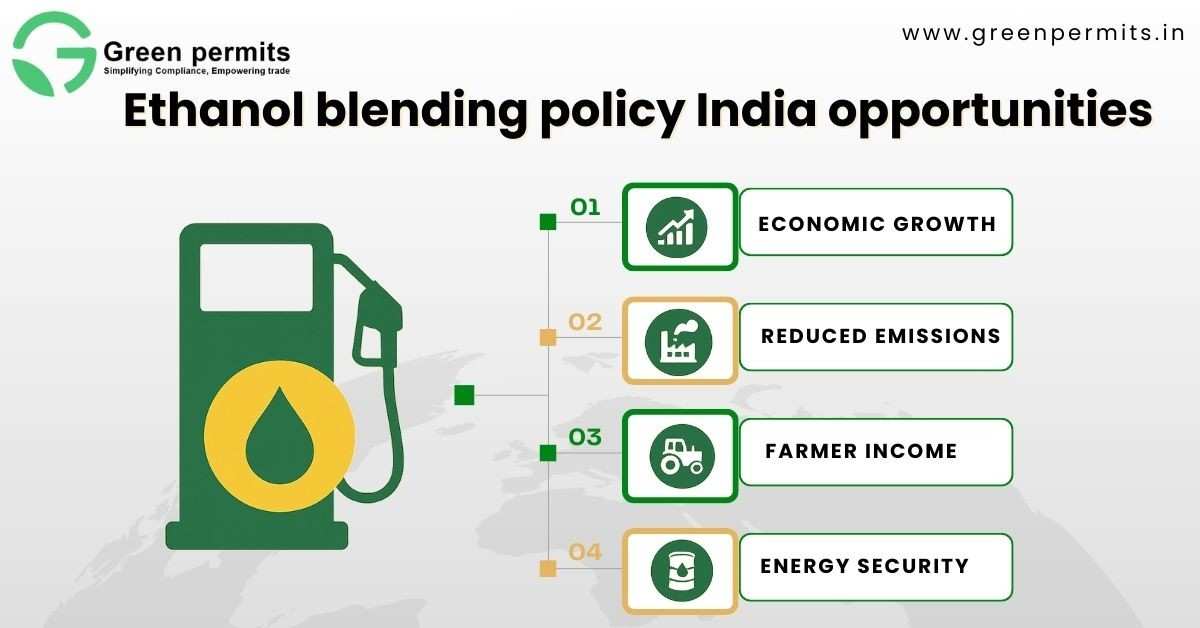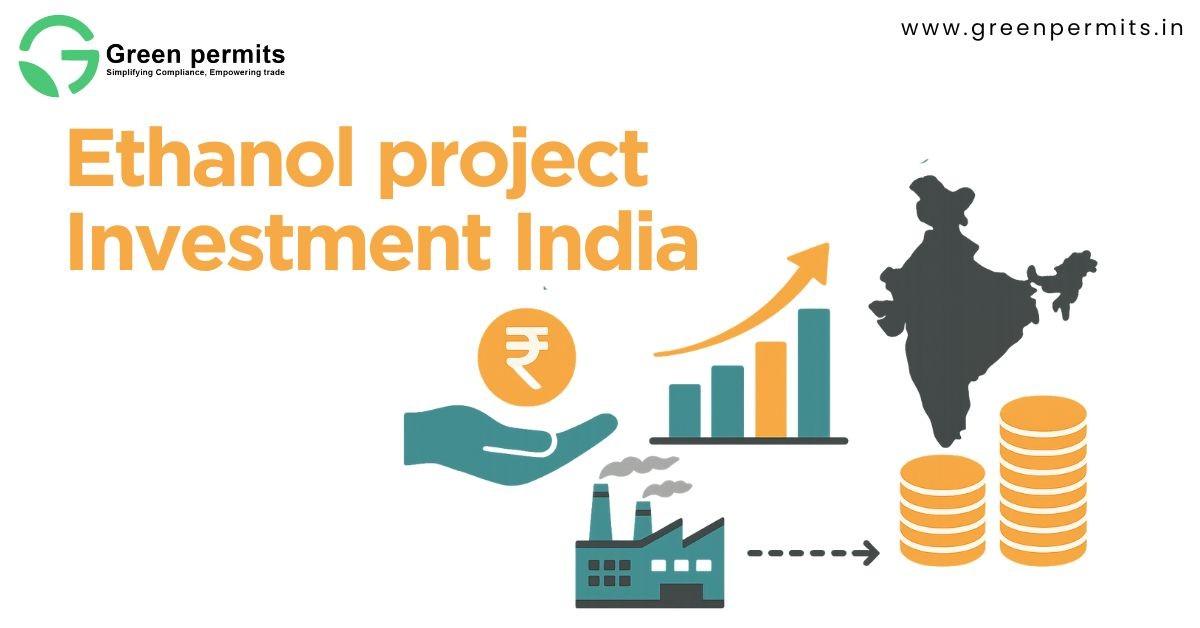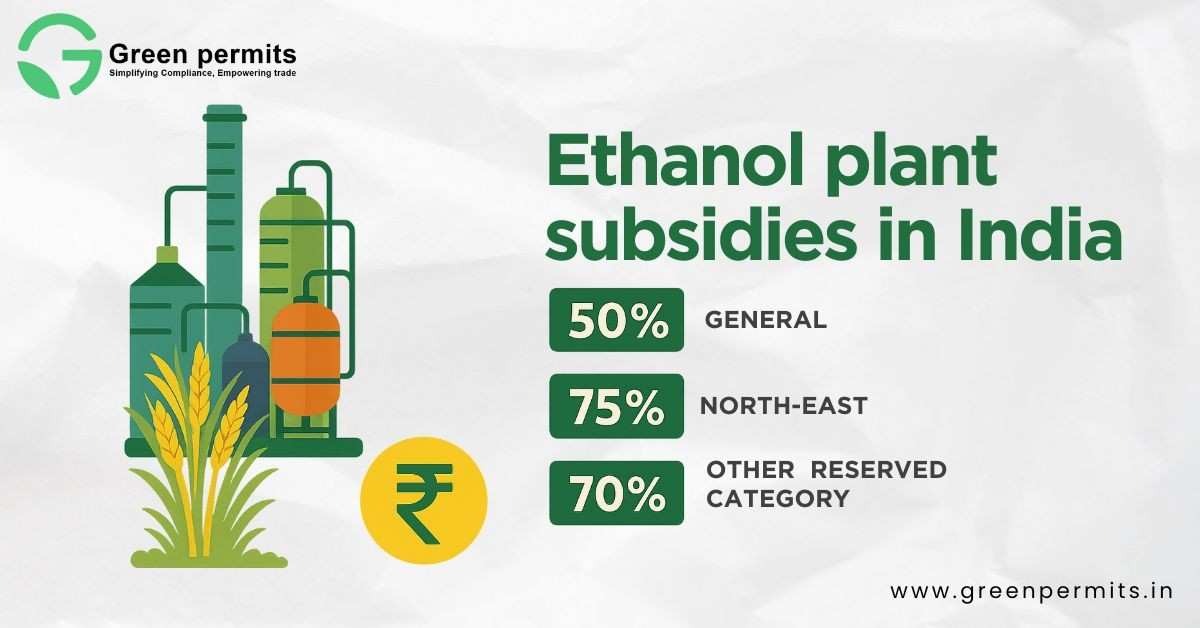India’s ethanol journey has taken a historic leap. The country originally targeted 20% ethanol blending in petrol (E20) by 2030, but by early–mid 2025, the government announced this milestone had already been achieved — six years ahead of schedule. This early success has major implications for distilleries, grain mill owners, and investors in the ethanol space.
With Oil Marketing Companies (OMCs) securing large volumes, policymakers are now considering higher blending levels — possibly 27% to 30% by 2030. For businesses, this means a wave of opportunities but also challenges: regulatory compliance, feedstock sourcing, and financial viability.
This blog unpacks India’s ethanol blending policy, demand outlook, blending targets, and what steps businesses need to take to benefit from this momentum.
India’s Ethanol Blending Targets & Current Status
India’s ethanol blending program has advanced faster than expected.
- 20% blending milestone: Achieved in 2025, well ahead of the 2030 deadline.
- Blending progress: By July 2025, blending stood at 19.05%, saving nearly ₹1.44 lakh crore in foreign exchange.
- Production surge: Ethanol output increased from 38 crore litres in 2014 to 661 crore litres in June 2025, a nearly 17x rise.
- Farmer benefits: Sugarcane and grain farmers have seen higher incomes due to ethanol procurement, reducing stockpiles of surplus grains.
This achievement has strengthened India’s energy security while helping reduce carbon emissions and crude oil imports.
What Drives the Demand for Ethanol?
Policy & Regulatory Push
Government interventions are central to India’s ethanol growth:
- Feedstock flexibility: Restrictions on using sugarcane juice, syrup, molasses, and surplus food grains were lifted for 2025–26, giving producers more freedom.
- Guaranteed offtake: OMCs are mandated to blend ethanol, ensuring steady demand for producers.
- Financial incentives: Interest subvention schemes, excise duty relaxations, and support for effluent treatment plants make investments attractive.
- Subsidies for diversification: Mills producing ethanol from multiple feedstocks gain priority in loan approvals.
Market & Economic Drivers
Beyond policy, broader economics fuel demand:
- Foreign exchange savings: Over ₹1.3 lakh crore saved by cutting crude imports.
- Carbon savings: India has abated millions of tonnes of CO₂ emissions under the Ethanol Blended Petrol (EBP) programme.
- Rising fuel demand: With growing vehicle ownership, OMCs require higher ethanol volumes each year.
- Farmer income boost: Distilleries pay farmers promptly, reducing arrears compared to traditional sugar sales.
Upcoming Targets & Policy Shifts Toward 2030
Having reached 20% blending early, India is evaluating even more ambitious targets:
- 30% blending by 2030: Reports suggest that the government may push the blending mandate up from 20% to 30%.
- Review of E20 rollout: Authorities are assessing engine compatibility, insurance implications, and consumer readiness.
- Feedstock expansion: With growing demand, the government is encouraging ethanol production from grains (corn, rice), cellulosic biomass, and agricultural residues.
This creates a clear opportunity: new plants and expanded capacity will be needed to meet future blending targets.
Comparison: Molasses vs Grain vs 2G Ethanol Plants
| Parameter | Molasses-based Plants | Grain-based Plants | 2G / Cellulosic Plants |
|---|---|---|---|
| CapEx (₹ Cr per KLPD) | Moderate (~₹80–100 Cr for 60 KLPD) | Higher (~₹120–150 Cr for 60 KLPD) | Very High (₹250+ Cr for 60 KLPD) |
| Feedstock availability | Seasonal (sugarcane areas) | Surplus rice, corn, damaged grains | Biomass & agri-residues |
| Setup timeline | 9–12 months | 12–18 months | 18–30 months |
| Sustainability impact | Moderate (high water use) | Better CO₂ savings, but grain vs food debate | Best CO₂ savings, but high tech risk |
| Payback period | 4–6 years | 5–7 years | Longer, depends on subsidies |
| Risk factors | Molasses price fluctuations | Food security debates | Tech maturity, supply chain issues |
This table shows why many entrepreneurs are now shifting towards grain-based ethanol, given surplus rice and maize allocations from government stocks.
Checklist: Steps Before Setting Up an Ethanol Plant
Step 1. Feasibility & DPR
- Assess feedstock availability (molasses, grain, biomass).
- Prepare a Detailed Project Report (DPR) covering costs, revenues, and logistics.
Step 2. Land & Infrastructure
- Secure land with water and power availability.
- Ensure effluent treatment/ZLD systems are part of design.
Step 3. Approvals & Licenses
- Environmental Clearance from MoEFCC/SEIAA.
- Consent to Establish (CTE) & Consent to Operate (CTO) from SPCB.
- CPCB/SPCB registrations under waste management rules.
- Excise license from State Excise Department.
- BIS certification for fuel ethanol supply.
- Hazardous waste authorization if applicable.
Learn more about BIS Certification
Step 4. Finance & Subsidies
- Apply under government’s interest subvention scheme.
- Explore viability gap funding & OMC offtake contracts.
Step 5. Plant Setup & Sustainability
- Select technology provider (molasses, grain, or 2G).
- Design for water efficiency & carbon credit eligibility.
Explore our Ethanol Plant Setup Consulting
Mini Case Study: A Grain Mill’s 60 KLPD Ethanol Plant
In Uttar Pradesh, a grain mill owner set up a 60 KLPD ethanol unit with ~₹150 crore investment.
- Feedstock: Used surplus rice and damaged grains allocated by the Food Corporation of India.
- Approvals: Obtained CPCB/SPCB clearances and BIS certification within 10 months.
- Finance: Secured bank loans under the interest subvention scheme.
- OMC Contract: Signed long-term supply agreement, ensuring guaranteed revenue.
- Payback: Reached breakeven in just 4 years.
- Impact: Created local jobs, boosted farmer income, and reduced stubble burning by using residues.
This case highlights how early movers are capturing ethanol blending opportunities.
Regulatory Bodies & Key Notifications
Business owners must track key regulators:
- MoEFCC: Environmental clearance & sustainability guidelines.
- CPCB & SPCBs: Consent to Establish, Consent to Operate, ZLD norms.
- BIS: Certification for fuel ethanol supply to OMCs.
- Excise Departments: Licenses for distilleries and bottling.
- Ministry of Petroleum & Natural Gas: Pricing and blending mandates.
- Department of Food & Public Distribution (DFPD): Subsidy schemes, feedstock allocation.
Conclusion
India’s ethanol blending success story is far from over. With blending targets likely to rise beyond 20% and demand from OMCs growing steadily, new ethanol plants and expansions are inevitable.
For entrepreneurs, the key lies in:
- Choosing the right feedstock strategy.
- Securing timely approvals and certifications.
- Leveraging subsidies and financing.
- Building sustainable, compliant plants.
Book Consultation for Ethanol Plant Setup with Green Permits to fast-track your journey.
Call us at +91 78350 06182
Email: wecare@greenpermits.in
FAQs
India achieved 20% blending in 2025, ahead of the original 2030 deadline. Government may revise the target to 27–30% by 2030.
Molasses, sugarcane juice, damaged food grains (rice, maize), and cellulosic biomass are permitted under government policy.
Approvals include Environmental Clearance (MoEFCC), CTE/CTO from SPCB, CPCB registration, Excise license, and BIS certification.
Interest subvention schemes, viability gap funding, and priority lending for ethanol projects are available through DFPD and banks.
Molasses-based: 4–6 years
Grain-based: 5–7 years
2G ethanol: Longer (depends on subsidy and scale)
OMCs (IOCL, BPCL, HPCL) issue tenders for ethanol procurement. Producers sign long-term contracts guaranteeing offtake.









